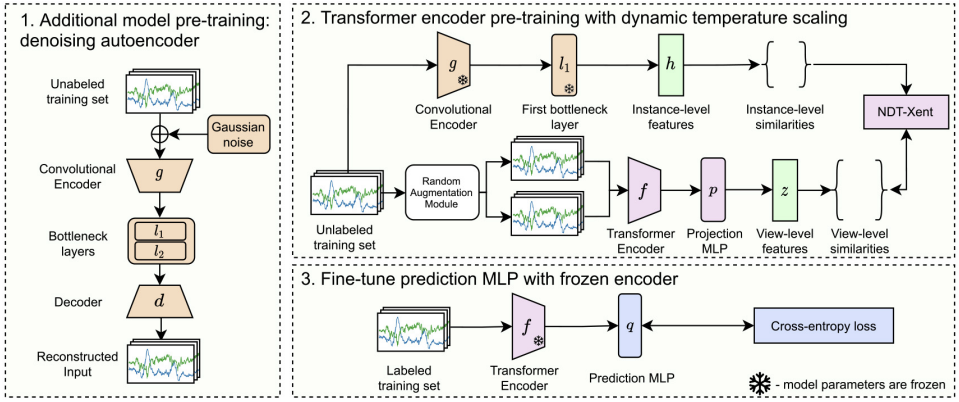Human Activity Recognition
Self-Suerpvised Learning (SSL) for sensor-based human activity recognition

While working as a post-doctoral researcher at Maastricht University, I was fortunate enough to be the daily supervisor of Bulat Khaertdinov, a Ph.D. candidate at UM. I guided and collaborated with Bulat to work in Self-Supervised Learning (SSL) for sensor-based Human Activity Recognition (HAR). During my Ph.D. research, when working on Deep Metric Learning, I recognized that SSL could improve the learning process, especially for those tasks (e.g., sensor-based HAR) where data collection and annotation are time-consuming and expensive. We conducted two studies, introducing a novel method based on contrastive-based SSL. Our study also addressed the problem of negative pairs in contrastive learning by using dynamic temperature scaling within a contrastive loss function. The extensive evaluations of three widely used open-source datasets have shown that the proposed method achieves state-of-the-art SSL activity recognition task results. Furthermore, it has demonstrated strong potential in semi-supervised and transfer learning by outperforming many counterpart baseline methods.
This collaboration resulted in the following publications:
- B. Khaertdinov, S. Asteriadis and E. Ghaleb, “Dynamic Temperature Scaling in Contrastive Self-Supervised Learning for Sensor-Based Human Activity Recognition,” in IEEE Transactions on Biometrics, Behavior, and Identity Science, vol. 4, no. 4, pp. 498-507, Oct. 2022, doi: 10.1109/TBIOM.2022.3180591.
- B. Khaertdinov, E. Ghaleb, and S. Asteriadis, “Contrastive self-supervised learning for sensor-based human activity recognition,” in 2021 IEEE International Joint Conference on Biometrics (IJCB), IEEE, 2021, 1–8 (second runner up award).
- B. Khaertdinov, E. Ghaleb, et al., “Deep triplet networks with attention for sensor-based human activity recognition,” in 2021 IEEE International Conference on Pervasive Computing and Communications (PerCom), IEEE, Mar. 2021, pp. 1–10.